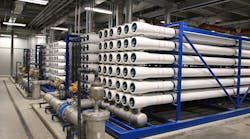WASHINGTON, DC, Jan. 5, 2010 -- The U.S. Environmental Protection Agency today announced a path forward on two coal mining operations in West Virginia.
EPA is informing the U.S. Army Corps of Engineers that it supports issuing a Clean Water Act permit for the Hobet 45 mine in Lincoln County, operated by Hobet Mining, LLC. EPA made this decision after extensive discussions between EPA and the company resulted in additional significant protections against environmental impacts.
In a second action, the Federal District Court in Southern West Virginia will extend the court-established deadline to respond to the company's earlier request to end the litigation on the proposed Spruce No. 1 mine in Logan County. EPA and the mining operator, Mingo Logan Mining Company, a subsidiary of Arch Coal, agreed to ask for the extension in order to continue discussions to determine if a revised mining plan can be developed that will comply with the Clean Water Act. After close study, EPA determined that the proposed mine raised significant environmental and water quality concerns.
"These are important examples of EPA's work to bring clarity to this process. Our role, along with the Army Corps of Engineers, is to ensure that mining companies avoid environmental degradation and protect water quality so that Appalachian communities don't have to choose between jobs and their health," said EPA Administrator Lisa P. Jackson. "Working closely with mining companies, our federal and state partners, and the public, our goal is to ensure Americans living in coal country are protected from environmental, health and economic damage."
In a letter sent today, EPA advised the Army Corps of Engineers that, as a result of changes agreed to by Hobet Mining LLC after discussions with EPA, the Hobet 45 mine now meets the requirements of the Clean Water Act, clearing the way for a final permit. EPA worked closely with Hobet Mining LLC and the Corps to redesign the proposed Hobet 45 mine to eliminate nearly 50 percent of stream impacts, reduce anticipated stream contamination, and protect public health. The Hobet 45 operation is expected to employ 460 United Mine Workers of America coal miners.
EPA's request to extend the court deadline for the Spruce No. 1 mine will allow EPA, the mining company, and the Corps to continue their coordination until early March 2010. In the meantime, no additional mining operations may occur at the site until EPA determines the project complies with the Clean Water Act. EPA initiated a process to restrict or prohibit mining activity based on its conclusion that Spruce No. 1 mine, one of the largest mountaintop removal mines proposed in the Appalachian coalfields, presents significant environmental and water quality concerns. The agency made clear it is willing to continue communications with the Mingo Logan Company to amend the project so that it may comply with the nation's clean water laws. If an agreement with the company can not be reached, EPA may take the next step in the process to prohibit or restrict mining activity under section 404(c) of the Clean Water Act.
Appalachian coal mining has buried an estimated 2,000 miles of streams in states including West Virginia. Scientific studies have increasingly identified significant water quality problems below surface coal mining operations that can contaminate surface waters for hundreds of years. Data from coalfield communities also indicate that coal mining is responsible for causing fish kills and contaminating fish and wildlife. EPA has committed to use its Clean Water Act regulatory authorities to reduce environmental and water quality impacts associated with surface coal mining.
More on the Hobet 45 Mine
As originally proposed, the Hobet 45 mine would have buried nearly six miles of headwater streams and contaminated downstream waters that now support healthy streamlife and are used by local residents for fishing and swimming. EPA recommended key changes to the mine plan in consultation with Hobet Mining and the Corps that will:
• Reduce stream impacts by more than 16,000 linear feet;
• Require that contaminated mine drainage be directed away from surface waters;
• Ensure more effective compensation for environmental losses;
• Establish an adaptive management plan to further protect water quality; and
• Protect highly productive streams on the mine site.
The Hobet 45 mine is one of 79 projects identified by EPA as raising environmental concerns under a special enhanced coordination process with the Corps to make decisions on a large group of permits that were delayed for several years because of litigation.
More on the Spruce No. 1 Mine
The Spruce No. 1 mine is one of the largest mountaintop removal mines ever proposed in the Appalachian coalfields and would clear more than 2,200 acres of forestlands, bury more than seven miles of headwater streams, and further contaminate downstream waters already heavily impacted by previous mining activities. EPA is concerned that the Spruce No. 1 mine may:
• Bury 7.5 miles of healthy headwater streams under 6 valley fills;
• Contaminate downstream surface waters with pollutants from the mine including selenium, conductivity, iron, and aluminum -- pollutants that would continue to drain into streams long after the mine is closed;
• Cause additional harm to the Little Coal River watershed already significantly impacted by previous mining activities -- 73 percent of streams are already impaired by mining;
• Deforest 2,200 acres of mature, productive forestlands; and
• Impact human health by contributing to water quality degradation and contaminating fish and wildlife.
The Spruce No. 1 Mine has been delayed for more than 10 years by citizen suits alleging the mine does not meet the requirements of federal laws. The current Clean Water Act permit for Spruce No. 1 has been held up in federal court since it was issued in 2007.
More information on the Hobet letter: http://www.epa.gov/owow/wetlands/pdf/Hobet_Jan_5_2010_letter.pdf
###


